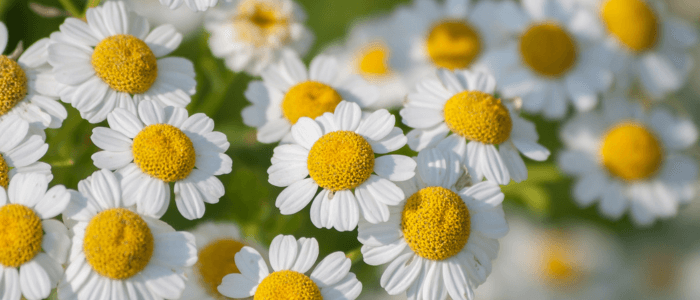Historical Significance and Cultural Importance
From the verdant gardens of European medieval monasteries to the modern households valuing natural remedies, Tanacetum parthenium or Feverfew, as it is more commonly known, has held an important position as a potent herb.

Historically, Feverfew was named for its ability to reduce fevers, though that's not its primary use in modern herbalism. This dainty, daisy-like flower was used by ancient Greeks to treat a variety of ailments, and over time, European herbalists employed it for conditions ranging from headaches to menstrual discomfort. Its longstanding use against migraines is particularly well-documented, making it a cherished remedy for many who seek relief from recurring headaches.
Soothing Feverfew Tea: An Ancient Comfort Recipe
Ingredients:
- Premium Quality Feverfew from Sacred Plant Co – 1 teaspoon
- Chamomile flowers – 1 teaspoon
- Peppermint leaves – 1 teaspoon
- Freshly boiled water – 1 cup
- Honey or lemon slice (optional) – to taste
Directions:
- Blending Traditions: Combine the feverfew, chamomile, and peppermint in a teapot or infuser.
- The Pour of Purity: Pour boiling water over the herbal blend.
- Steep with Time's Grace: Allow the herbs to mingle and steep for about 5 minutes. As they infuse, you'll witness a marriage of aromas, each contributing to the tranquil ambiance.
- Serving Serenity: Strain the mixture into your cup. Add a touch of honey or a slice of lemon if you prefer a dash of sweetness or zest.
- Relish & Reflect: Sip slowly, and let the blend's soothing qualities wash over you.
A Moment of Mindfulness
Feverfew's ancient reputation as a healer is not to be taken lightly. If you're considering it for migraines or any other ailment, it's always wise to consult with a healthcare professional, especially if you're on medications or pregnant.
However, for those moments when you need a gentle reprieve, a cup of feverfew tea, especially when combined with the comforting notes of chamomile and the invigorating touch of peppermint, can be a beautiful ritual, linking us to traditions that span millennia.





